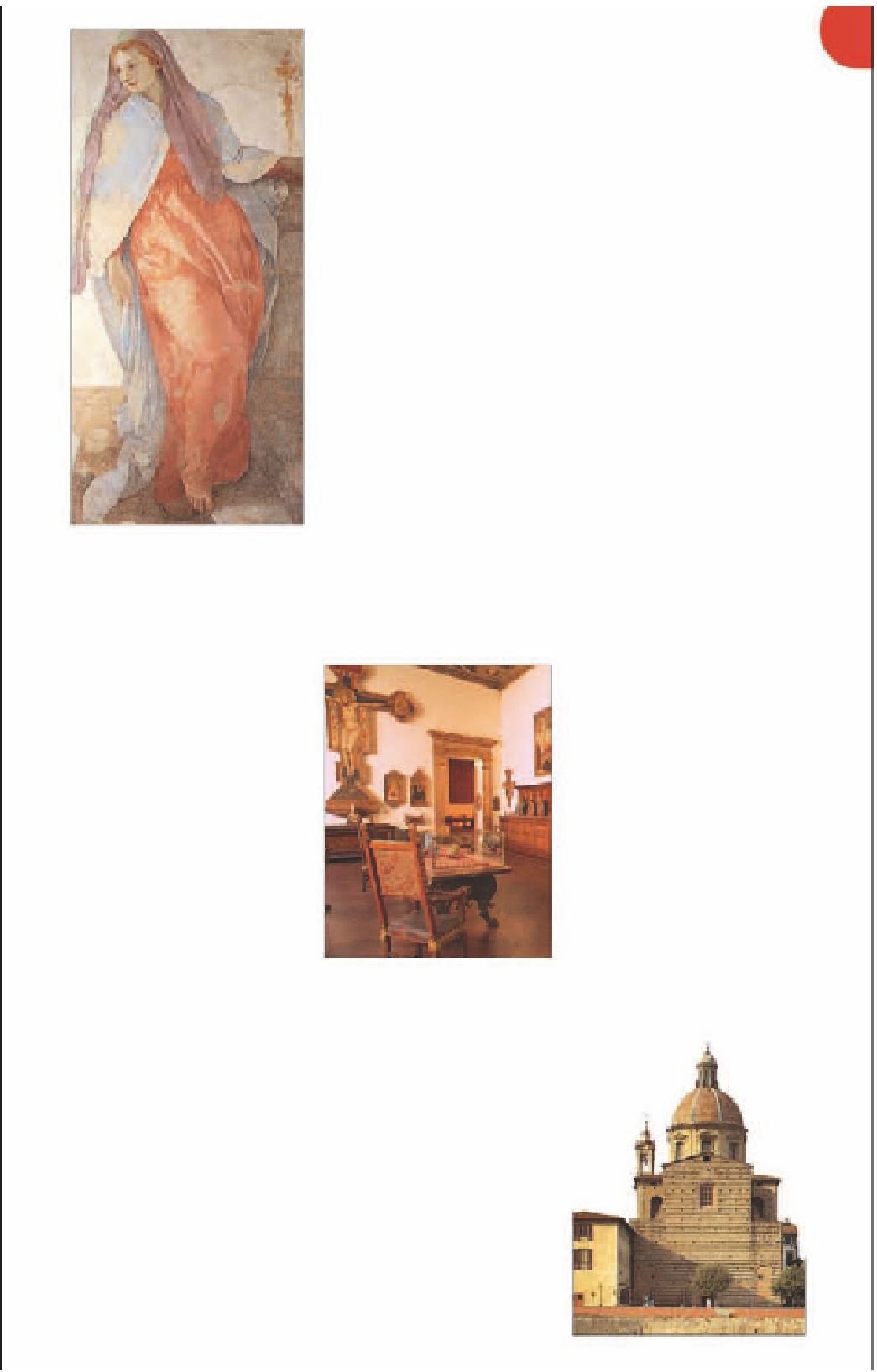Travel Reference
In-Depth Information
Museo Bardini
8
Piazza de' Mozzi 1.
Map
4 D2 (6 E5)
.
Tel
055 234 24 27.
¢
contains the museum, which
has a zoological section
exhibiting vast numbers of
preserved animals, insects
and fish, and an anatomical
section with some extremely
realistic 18th-century wax
models showing various
grotesque aspects of human
physiology and disease. Not
for the faint-hearted!
for restoration until further
notice. Call for more information.
&
^
Stefano Bardini was a 19th-
century antiquarian and avid
collector of architectural
materials - mostly salvaged
from the churches and
palazzi demolished when
the Piazza della Repubblica
was built in the 1860s
(see
p112)
. In 1883 he built his
palazzo in Piazza de' Mozzi
almost entirely from recycled
medieval and Renaissance
masonry, including carved
doorways, chimney pieces
and staircases as well as
painted and coffered ceilings.
The rooms are full of
sculpture, statues, paintings,
armour, musical instruments,
ceramics and antique furnish-
ings. In 1922 this collection
of antiquities was bequeathed
to the people of Florence.
Brancacci
Chapel
0
See pp126-7.
San Frediano
in Cestello
q
Piazza di Cestello.
Map
3 B1 (5 A3).
2
D, 6.
Tel
055 21 58 16.
#
10-11:30am, 4:30-6pm
Mon-Sat; 5-6:30pm Sun.
The Virgin from
The
Annunciation
(1528) by Pontormo
6
Santa Felicità
5
Piazza di Santa Felicità.
Map
3 C2
(5 C5).
Tel
055 21 30 18.
#
The San Frediano area, with
its small, low houses, has long
been associated with the wool
and leather industries. The
parish church of San Frediano
in Cestello stands beside the
Arno looking across the river.
It has a bare stone exterior
with a large dome that is a
local landmark. It was rebuilt
on the site of an older church
in 1680-89 by Antonio Maria
Ferri: the fresco and
stuccowork inside are typical
of the late 17th and early 18th
centuries. Nearby is a well-
preserved stretch of the 14th-
century city walls. The Porta
San Frediano, built in 1324, has
a tower overlooking the road
to Pisa. Its wooden doors have
retained their
original 14th-
century locks
and detailed
ironwork.
9am-noon, 3:30-6:30pm Mon-
Sat.
^
7
A church has stood on this
site since the 4th century AD,
but the current building dates
from the 11th century. It was
extensively remodelled by
Ferdinando Ruggieri in 1736-9,
but some original Gothic fea-
tures and the porch added by
Vasari in 1564 were retained.
The Capponi family chapel to
the right of the entrance houses
two works by Mannerist artist
Jacopo da Pontormo: a panel
depicting
The Deposition
and an
Annunciation
fresco. Painted
in 1525-8, they make use of
vivid colours such as salmon
pink, light green, apricot and
gold. The roundels at the base
of the ceiling vault depict the
Four Evangelists, also painted
by Pontormo, with help from
his pupil Agnolo Bronzino.
Museo Bardini, Piazza de' Mozzi
Museo
“La Specola”
9
Via Romana 17.
Map
3 B2 (5 B5).
Tel
055 22 88 251.
#
9:30am-
4:30pm Tue-Sun.
¢
public hols.
6
8
in English, on request.
&
This unusual museum is in
the Palazzo Rottigiani, built
in 1775 and now used by
the natural science faculty
of Florence University. The
name “la Specola” refers to
the observatory built on the
roof of the building by Grand
Duke Pietro Leopoldo in the
late 18th century. It now
Palazzo Pitti
6
See pp120-23.
Boboli Gardens
7
See pp124-5.
The dome and plain façade of
San Frediano in Cestello









































